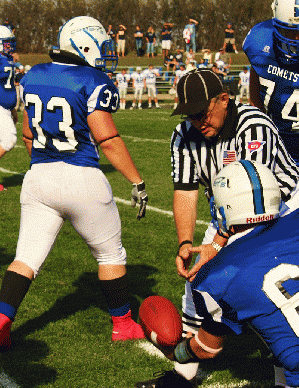The real problem with college sports -- Part I of 3 parts
Taylor Branch, in an excellent article in the October, 2011 Atlantic Monthly, wrote "the real scandal is the very structure of college sports, wherein student-athletes generate billions of dollars for universities and private companies while earning nothing for themselves."
Mr.
Branch is rightly outraged about the exploitation of, "student-athletes."[1]
However, his claim that college sports generate billions of dollars for universities
is questionable. Most sports departments operate at a loss. The commercialized
sports programs of most Div. I and II schools don't generate money for
education. They cost most schools money. For example, according to Benedict and
Keteyan, Football Bowl Subdivision (FBS)
schools spend more than $91,000 per athlete compared with just over $13,000 per
student by other schools. Yet students across the country face steep
tuition hikes and increased fees."[2]
Ben Mangrum writes "diminishing research budgets, the administrative erosion of the tenure system, the economic efficiency of adjunct labor, and rising tuition costs all subsidize the American college football system."[3]
Despite the rising tuition costs alluded to by Mangrum, Div. I and II schools continue to pay coaches outrageous salaries, build new athletic facilities and provide athletes with scholarships. All this is done with money that could be used to fund scholarships based on need and academic merit.
In short, sports department income is rarely used for educational purposes -- except to the extent that it is used to fund intramural and non-commercialized sports. Further, in addition to suffering net losses from their commercialized sports programs, many universities throw good money after bad. For example, the University of Miami, Ohio recently committed "more than $80 million -- much of it borrowed - to expand its football stadium . . ."[4]
College sports are not a "milk cow," for colleges and universities. They are, however, a milk cow for Div. I and II coaches, for the NCAA and for the commissioners of the NCAA's various conferences. The president of the NCAA, Mark Emmert, was paid approximately $1.8 million in 2013. Each of the commissioners of its 5 major conferences made more than $2 million per year. [5]
The real scandal
However, neither the exploitation of college athletes nor the waste of money on commercialized college sports is the real scandal. The real scandal is that commercialized sports in Div. I and II universities erode the quality of higher education in the US. Even if they contributed regular and substantial amounts to the academic departments of their universities, they would still be undesirable. They encourage hypocritical and corrupt behavior. They produce cynicism. They teach students that spectator sports, money, power and glory trump education. Commercialized sports and education do not mix. Div. III sports and intramural sports at all levels, on the other hand, support the goals of higher education.
Parts II and III of this article discuss these matters and suggest that "a student's right to organize" might offer a ray of hope for bringing an end to commercialized college sports.
[1] Athletes quite rightly feel that they are being exploited. For example, in 2013, among the ten schools with the largest athletic department expenses, Texas paid its coaches 55.2 million dollars and spent 10.5 million on its athletes. The University of Michigan was generous with both its coaches (44.7 million) and with its athletes (15.4 million). "Sports Chart of the Day, Athletic Department Expenses (2013)," Business Insider, Accessed June 7, 2015.
[2] Jeff Benedict and Armen Keteyan, The system, the glory and the scandal of big-time college football (2013). Quoted in Ben Mangrum, Ethos, and Mar. 27, 2014.
[3] Ben Mangrum in Ethos
[4] Cliff Poole, "Athletics cost colleges, students millions," The Cincinnati Enquirer, Sept. 13, 2013
[5] Jon Solomom, --Inside College Sports," CBS Sports, June 30, 2015.





